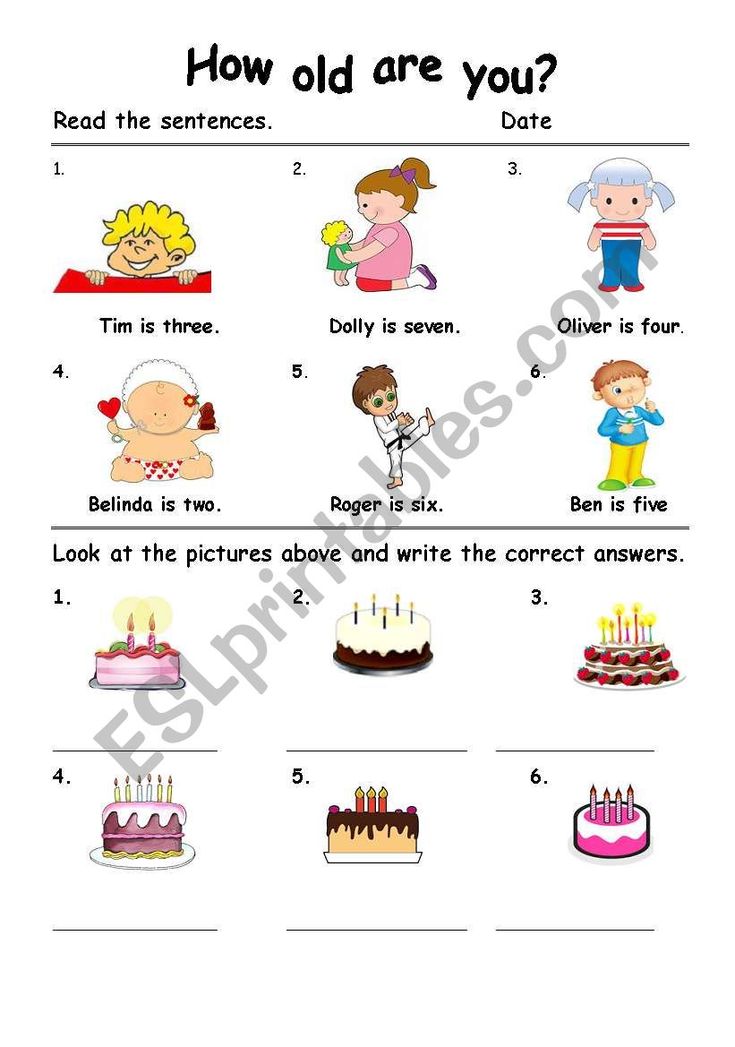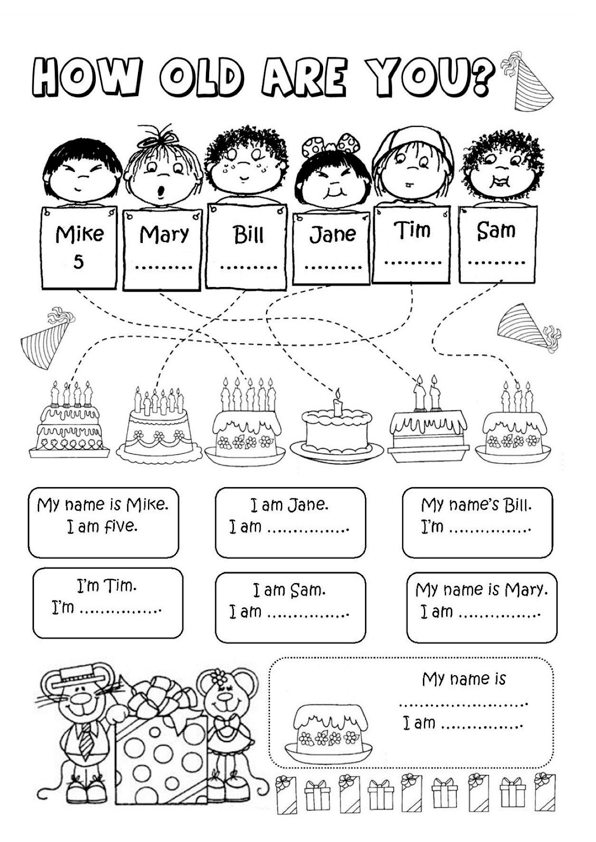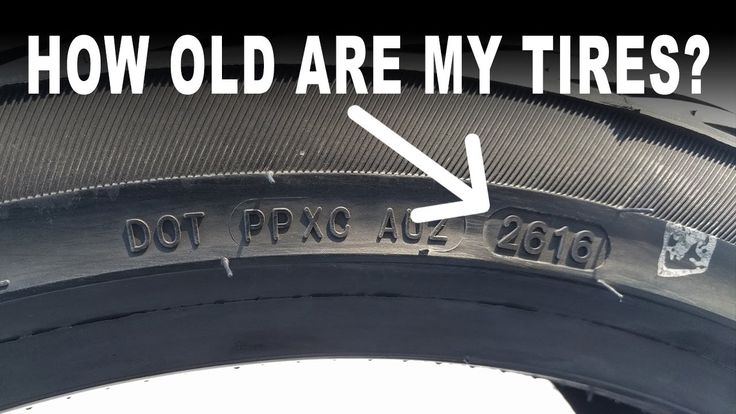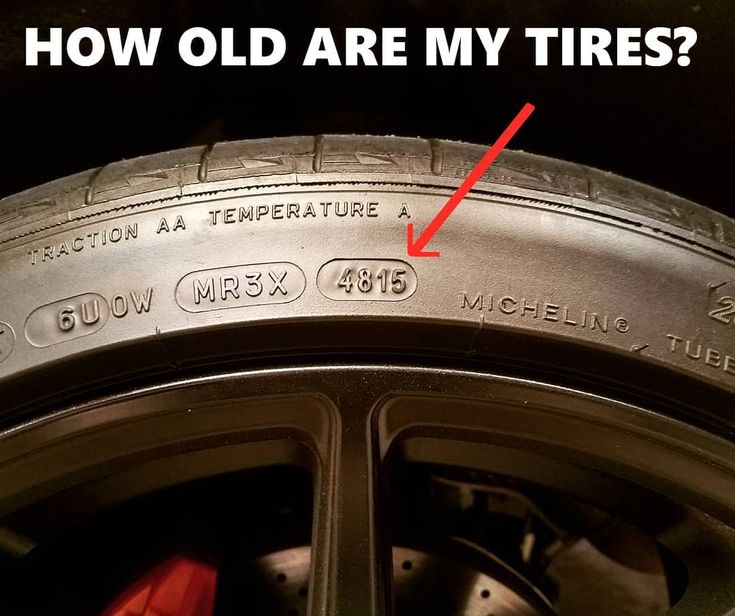The U.S. Department of Transportation (DOT) number stamped on the tire’s sidewall contains a date code that identifies the age of your tires. This DOT number (also called the Tire Identification Number or TIN) is contained in a sequence of up to 12 letters and numbers that signify the tire size, the manufacturer, the specific plant where it was built and when it was built. In the event of a recall, tiremakers and the National Highway Traffic Safety Administration use the DOT number to identify which defective tires are in the campaign. The date code used on tires is not a typical representation used for dates and can be easily missed by the untrained eye.
To determine the age of your tires, check the last four digits of the U.S.
Tires built from 2000 to the present use the last four-digits of the DOT number to identify the week and year of manufacture. For example, a DOT number with 4116 at the end of the sequence would mean that the tire was manufactured in the 41st week of 2016, or sometime in the mid-October.
While it is increasingly rare to find a tire made before 2000, these tires use only three digits in the date code for the week and year. A tire with a three-digit date code like 416 means that the tire was made in the 41st week of 1996.
Tire DOT Numbers Include a Date Code
(Source: National Highway Traffic Safety Administration)
Be aware that the complete tire DOT number is not required to be molded on both sides of the tire. While some tire makers include the full DOT number on both sides, the date code on your tires may only be contained on one side. If the DOT number is only eight characters, you’ll need to look on the other side of the tire to find the full number with the date code.
Why is it important to understand your tire’s age? Manufacturers have known for decades that exposure to heat and oxygen weakens rubber over time. Today’s tires are highly engineered products, with anti-aging chemicals mixed in the rubber compounds, along with others to make the rubber softer and more flexible. But, over time, the rubber and component materials within the tire changes and becomes more prone to failure. In most instances this loss of strength is invisible – and the material degradation is present regardless of tread depth and even in tires that have never even been put on a vehicle
Today’s tires are highly engineered products, with anti-aging chemicals mixed in the rubber compounds, along with others to make the rubber softer and more flexible. But, over time, the rubber and component materials within the tire changes and becomes more prone to failure. In most instances this loss of strength is invisible – and the material degradation is present regardless of tread depth and even in tires that have never even been put on a vehicle
Aged tires are more susceptible to catastrophic tread separations, which occurs when the tire’s outer layer separates from the tire body or casing. This type of failure can be much more dangerous for drivers to manage than a flat tire or blow out, particularly in trucks, SUVs and vans – particularly 15-passenger vans – because they are more prone to handling and stability problems.
While tread separations caused by manufacturing defects can occur in new tires, tires older than six years – especially those on vehicles located in hot-weather states such as if such as Arizona or Florida – are more prone to suffer a catastrophic tread separation.
According to the National Highway Traffic Safety Administration “Most vehicle owners can easily overlook tire aging, increasing their risk of a crash.”
Based on research showing that the rate of tire failures increases after six years, nearly all vehicle manufacturers recommend owners replace tires after six years, regardless of tread depth. Most tire manufacturers recommend replacement at 10 years or that owners follow the vehicle manufacturer’s guidelines. Tire makers continue to insist that expiration dates are not necessary, yet, nearly all passenger and light truck tire warranties expire at six years. Some tire retailers have also adopted the tire age recommendations and will not service vehicles with tires that are beyond the manufacturers age recommendation.
Consumers should also check the DOT code when buying new replacement tires. Some retailers will sell a “new” tire that has actually been sitting in their inventory for years. That tire could have been improperly stored in a warehouse or outdoors exposed to high temperatures that reduce a tire’s robustness and useful life.
That tire could have been improperly stored in a warehouse or outdoors exposed to high temperatures that reduce a tire’s robustness and useful life.
Consumers should insist on replacement tires manufactured within months of the purchase date. And, regardless of tread depth, vehicle owners should replace their tires six years and older.
Call us if you believe a defective tire caused your accident. The team at Newsome Melton can review the facts of your case and determine if we believe you have a valid claim for compensation. If we feel you have a strong defective tire case against the manufacturer, we can navigate the claims process on your behalf and potentially recover compensation to pay for your medical bills, lost wages, vehicle repair or replacement, or other losses.
Call us today at 888-221-5316 or contact us through our online chat. We offer free reviews and handle many of these claims on a contingency fee basis. This means we do not recover compensation unless you do.
This means we do not recover compensation unless you do.
Have you ever asked yourself, “how old are my tires?”. If not – you should. Determining your tire age is very important to you and your family’s safety. If you’re driving with a tire over six years old, you could be putting yourself in danger, as tires dry rot with age from the inside out.
“These Tires Have a Few Good Years Left in Them”I used to think, “the tread looks great, no bald or worn out spots, these things could last at least a couple more years”. They may last another three years, but your tread has little to do with it. What is more essential is the age of the tire. Tires are made of rubber, obviously, and when rubber gets old, it starts to dry and crack (often times from the inside out – this process is not always visible to the naked eye).
What’s more important than the thickness of the tread is the date that the tires were manufactured. Until recently, I had no idea that the age of the tire mattered. I thought it was all in the tread and visible cracking. I also had no idea that tires have a manufacture date stamped on them. But the manufacturers don’t make it easy on you to figure this out.
Until recently, I had no idea that the age of the tire mattered. I thought it was all in the tread and visible cracking. I also had no idea that tires have a manufacture date stamped on them. But the manufacturers don’t make it easy on you to figure this out.
It turns out that tires have cryptic codes on them. Believe it or not, you can actually determine your tire’s manufacture date based on these codes.
How to Determine your Tire AgeLet’s discuss post year 2000 tire manufacturing date stamps (if your tire is older than this as indicated by a lack of this standard, you’ll want to have it replaced immediately). Tirerack.com has a great demonstration on how you can determine your tire’s ages:
Tires Manufacture Date After 2000Will My Set of Four Tires All be the Same Age?Since 2000, the week and year the tire was produced has been provided by the last four digits of the Tire Identification Number with the 2 digits being used to identify the week immediately preceding the 2 digits used to identify the year.

Example of a tire manufactured since 2000 with the current Tire Identification Number format:
DOT U2LL LMLR 5107 Manufactured during the 51st week of the year, in 2007 While the entire Tire Identification Number is required to be branded onto one sidewall of every tire, current regulations also require that DOT and the first digits of the Tire Identification Number must also be branded onto the opposite sidewall. Therefore, it is possible to see a Tire Identification Number that appears incomplete and requires looking at the tire’s other sidewall to find the entire Tire Identification Number
The use of a partial Tire Identification Number on the one sidewall (shown above) reduces the risk of injury to the mold technician that would have to install the weekly date code on the top sidewall portion of a hot tire mold.

Another thing to note when getting new tires or checking your old is that all four tires will most likely not be the exact same age. On a previous set of tires I purchased, I found that three of my new tires were made in the second week of 2008, while the fourth was made in the 21st week. Had any of my tires been manufactured more than a year prior to my date of purchase, I would have taken them back immediately and demanded a refund. When checking the age of your tires, check all four tires.
My Tires Don’t have a Code on Them!If you do not see a manufacturing code on your tire, grab a flashlight and slide underneath your car to check the other side. Tire manufacturers want to make it as hard as possible for you to determine your tire’s age, so they’ve inconveniently placed the manufacture date on only one side of your tires.
Why Do Tire Companies Hide the Tires Manufacture Date?Because they can and it’s profitable to do so. In many other countries, government works for consumers a little harder on their rights. In the good ole’ USA, big business lobbies against consumer rights and quite often wins. Why would the big tire manufactures want to pull their tires off the shelf to be destroyed?
In many other countries, government works for consumers a little harder on their rights. In the good ole’ USA, big business lobbies against consumer rights and quite often wins. Why would the big tire manufactures want to pull their tires off the shelf to be destroyed?
Take a peek at this very informative video from ABC’s 20/20, in which a hidden video camera was used in tire stores. Some retailers were helpful and informed, others not so much. Some retailers were selling tires as old as 12 years! You have to wonder how much of this is corporate mandate versus ignorance.
It pays to be an informed consumer, both in terms of finance and safety. If you’ve bought old tires recently, hopefully you have save your receipts. Go back to the place you purchased from and see if they’ll swap newly manufactured tires (or demand it). If that doesn’t work, you should at least be able to get a credit towards new tires.
Related Posts:
Thanks! Check your inbox (& spam folder) in a minute for your welcome email!
Oops... Please try again.
Do not know how old your tires are, and do not know where to look for the date of manufacture of tires? Don't worry - this is a common problem. We can show you the date of manufacture of a tire and teach you how to quickly find out the date of manufacture of your tires.
You can find out the year of manufacture of rubber on the sidewall of the tire in an oval stamp in the form of 4 digits, for example: 1612. The first two digits mean the week of manufacture, the last two - the year. In our case, week 16 is April 2012.
The first two digits mean the week of manufacture, the last two - the year. In our case, week 16 is April 2012.
If you look closely at each of your tires, you will see a bunch of letters and numbers. While this may just look like confusion, it's actually useful information. Look for a number that begins with the letters "DOT" followed by a series of 10-12 characters. This code, which is required by the US Department of Transportation (DOT) and applies worldwide, will tell you a few things:
The date of manufacture is the last four digits of the DOT code. The first two digits are the week of manufacture and the last two digits are the year. For example, if the last four digits of the DOT code are 0203, this means that the car tire was manufactured during the second week of 2003. Pretty simple, right? However, if your tires were made before 2000, things get a little more complicated.
Pretty simple, right? However, if your tires were made before 2000, things get a little more complicated.
The date of issue is the last three digits of the code. The first two digits refer to the week in that year. For example, if the last 3 digits are 022, this means that the car tire was produced in the second week of the year, and the year is the second year of the decade. Here's where it gets confusing - there's no universal identifier that specifies which decade, so in this example, the tire could have been made in 1982 or 1992. Some tires have a small triangle following the DOT code to indicate 1990s.
If you look at the sidewall of the tires and see a DOT number that seems incomplete, it's because current DOT regulations require the entire number to be on only one sidewall, while only the first few digits are on the opposite sidewall. To see the entire DOT number, just look at the other side wall.
After five years of storage, tires lose their performance, regardless of whether the storage conditions were observed or not. Therefore, it is not recommended to use car tires with a manufacturing date older than five years.
The average shelf life of tires, declared by the manufacturer, is 7-10 years, depending on seasonality - harder summer tires on a car last longer than soft winter ones.
Amtel, Barum, Bridgestone, Continental, Cooper, Cordiant, Dayton, Debica, Goodyear, Dunlop, Falken, Firestone, Fulda, General, Gislaved, Hankook, Kama, Kelly, Kleber, Kormoran, Kumho, Marshal, Matador, Maxxis, Michelin, Nitto, Nokian, Pirelli, Sava, Semperit, Tigar, Triangle, Toyo, Uniroyal, Yokohama.
However, don't pay too much attention to the age of the tires when buying, especially if they are less than two years old. Practice shows that such automotive rubber is no worse than the one that was made just a month ago. And the performance and durability of tires primarily depends on their original quality. Choose quality tires.
Practice shows that such automotive rubber is no worse than the one that was made just a month ago. And the performance and durability of tires primarily depends on their original quality. Choose quality tires.
If you are looking for replacement wheels, then use our online tire calculator with updates for 2022 in the next section tire calculator.
Author: Igor Gushcha
Contents
If you look closely at each of your tires, you will see a bunch of letters and numbers. While this may just look like confusion, it's actually useful information. Look for a number that begins with the letters "DOT" followed by a series of 10-12 characters. This code, which is required by the US Department of Transportation (DOT) and applies worldwide, will tell you a few things:
While this may just look like confusion, it's actually useful information. Look for a number that begins with the letters "DOT" followed by a series of 10-12 characters. This code, which is required by the US Department of Transportation (DOT) and applies worldwide, will tell you a few things:
For tires manufactured in 2000
The date of manufacture is the last four digits of the DOT code. The first two digits are the week of manufacture and the last two digits are the year. For example, if the last four digits of the DOT code are 0203, this means that the car tire was manufactured during the second week of 2003. Pretty simple, right? However, if your tires were made before 2000, things get a little more complicated.
The date of issue is the last three digits of the code. The first two digits refer to the week in that year. For example, if the last 3 digits are 022, this means that the car tire was produced in the second week of the year, and the year is the second year of the decade. Here's where it gets confusing - there's no universal identifier that specifies which decade, so in this example, the tire could have been made in 1982 or 1992. Some tires have a small triangle following the DOT code to indicate 1990s.
For example, if the last 3 digits are 022, this means that the car tire was produced in the second week of the year, and the year is the second year of the decade. Here's where it gets confusing - there's no universal identifier that specifies which decade, so in this example, the tire could have been made in 1982 or 1992. Some tires have a small triangle following the DOT code to indicate 1990s.
If you look at the sidewall of the tires and see a DOT number that seems incomplete, it's because current DOT regulations require the entire number to be on only one sidewall, while only the first few digits are on the opposite sidewall. To see the entire DOT number, just look at the other side wall.
The tire release date is always stamped on the following tire manufacturers:
Amtel, Barum, Bridgestone, Continental, Cooper, Cordiant, Dayton, Debica, Goodyear, Dunlop, Falken, Firestone, Fulda, General, Gislaved, Hankook, Kama, Kelly, Kleber, Kormoran, Kumho, Marshal, Matador, Maxxis, Michelin, Nitto, Nokian, Pirelli, Sava, Semperit, Tigar, Triangle, Toyo, Uniroyal, Yokohama.